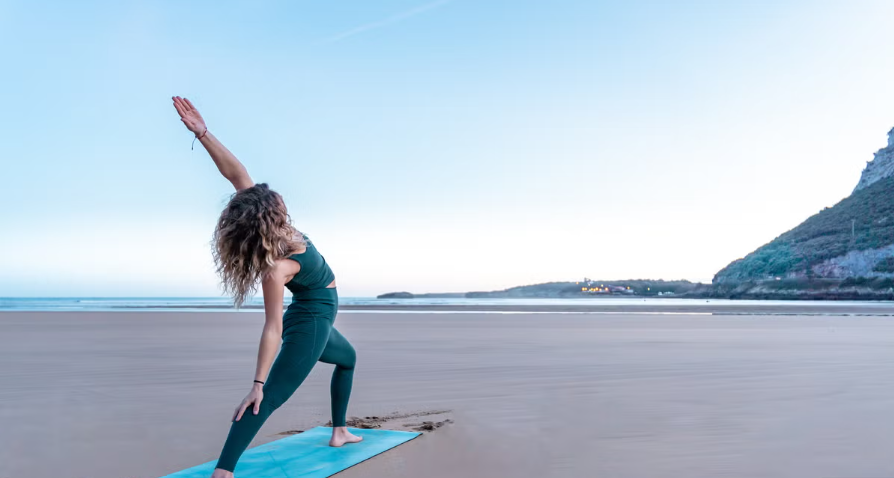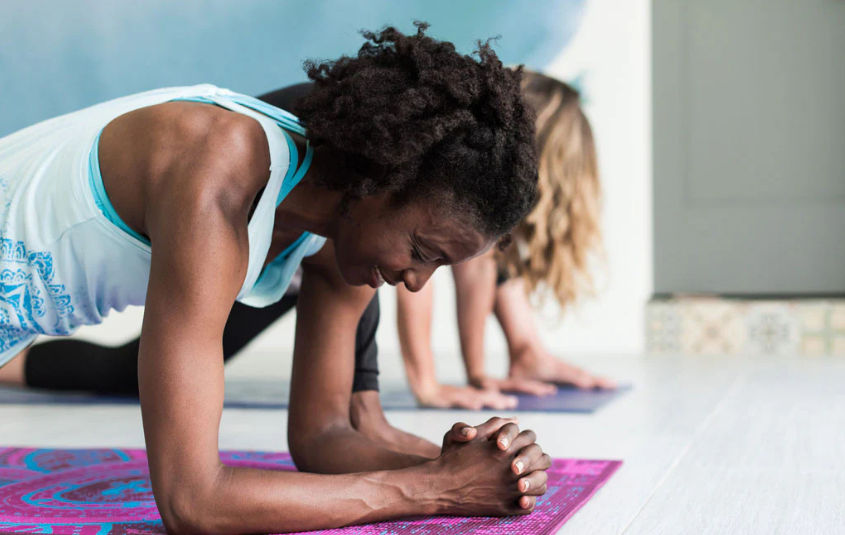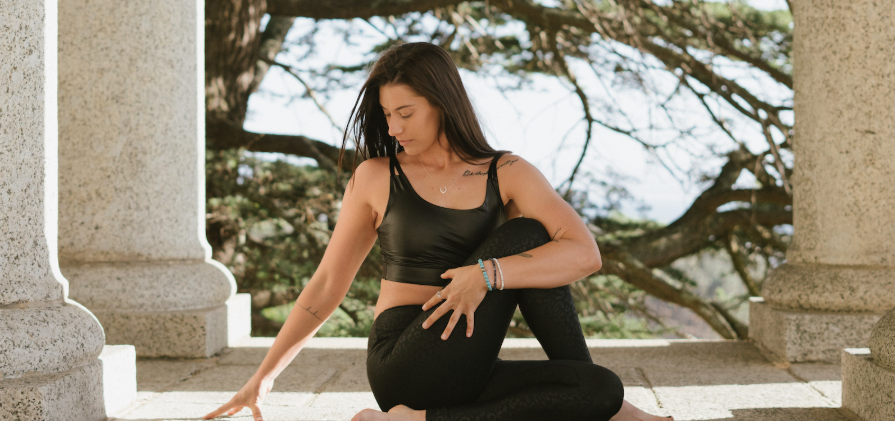
Flexibility is a key benefit of yoga, and regular practice can significantly improve your range of motion, reduce stiffness, and enhance mobility. Whether you're new to yoga or have been practicing for a while, focusing on flexibility can help you move more freely and prevent injury. This guide will introduce you to some of the best yoga poses for increasing flexibility, targeting areas like the hips, hamstrings, shoulders, and back.

Prevents Injury: Flexible muscles are less likely to strain, and flexible joints can move more freely, reducing the risk of injury during physical activity.
Improves Posture: Tight muscles, especially in the hips and shoulders, can lead to poor posture. Regular stretching helps open these areas, improving alignment and posture.
Increases Range of Motion: Flexibility allows your body to move through a fuller range of motion, making everyday movements easier and more comfortable.
Promotes Relaxation: Stretching helps release tension in the body, which promotes relaxation and reduces stress.

Forward Fold (Uttanasana): This pose stretches the hamstrings, calves, and lower back.
How to Do It: Stand with your feet hip-width apart. Inhale, and as you exhale, hinge at the hips to fold forward, letting your head and arms hang. Bend your knees if needed to avoid straining your hamstrings.
Benefits: Stretches the entire back of the body, promotes relaxation, and improves flexibility in the hamstrings.
Downward-Facing Dog (Adho Mukha Svanasana): A foundational pose that stretches the hamstrings, calves, shoulders, and spine.
How to Do It: Start on your hands and knees, tuck your toes, and lift your hips toward the ceiling. Press your hands firmly into the mat and straighten your legs as much as possible.
Benefits: Lengthens the spine, stretches the back of the legs, and opens the shoulders.
Cobra Pose (Bhujangasana): A gentle backbend that stretches the chest, shoulders, and abdomen.
How to Do It: Lie on your stomach with your hands under your shoulders. Inhale as you lift your chest off the ground, keeping your elbows slightly bent. Press your thighs and hips into the mat.
Benefits: Increases flexibility in the spine, stretches the chest, and improves posture.
Low Lunge (Anjaneyasana): This pose stretches the hip flexors, quads, and hamstrings.
How to Do It: From a standing position, step one foot back into a lunge, lowering your back knee to the ground. Keep your front knee bent at a 90-degree angle and raise your arms overhead.
Benefits: Opens the hips and stretches the legs, improving flexibility in the hip flexors and hamstrings.
Pigeon Pose (Eka Pada Rajakapotasana): A deep hip opener that stretches the hips, thighs, and lower back.
How to Do It: From a Downward Dog position, bring one knee forward and place it behind your wrist, with your shin angled across the mat. Extend the other leg straight back, and lower your torso over your front leg.
Benefits: Releases tension in the hips, improves hip flexibility, and stretches the thighs and glutes.
Seated Forward Bend (Paschimottanasana): A seated stretch for the hamstrings and lower back.
How to Do It: Sit with your legs extended in front of you. Inhale to lengthen your spine, then exhale as you fold forward, reaching for your feet or shins.
Benefits: Lengthens the hamstrings, stretches the spine, and calms the mind.
Butterfly Pose (Baddha Konasana): A seated hip-opening pose that stretches the inner thighs and groin.
How to Do It: Sit with your knees bent and the soles of your feet touching. Hold your feet and gently press your knees toward the floor. Sit tall and lengthen your spine.
Benefits: Increases flexibility in the hips and inner thighs, and helps release tension in the lower back.
Wide-Legged Forward Bend (Prasarita Padottanasana): A standing forward fold that stretches the hamstrings, calves, and lower back.
How to Do It: Stand with your legs wide apart. Inhale to lengthen your spine, and as you exhale, hinge at the hips to fold forward, placing your hands on the floor or blocks in front of you.
Benefits: Improves flexibility in the legs and back, and promotes calmness.
Inhale to Lengthen, Exhale to Release: When practicing yoga poses, inhale deeply to create space and length in your body. As you exhale, relax into the stretch, allowing your muscles to release tension.
Ujjayi Breath: Also known as victorious breath, Ujjayi breathing involves inhaling and exhaling through the nose while slightly constricting the throat. This helps regulate your breath and keep you calm during deeper stretches.
Long, Slow Breathing: Take slow, deep breaths in and out through your nose while holding stretches. This sends signals to your body to relax, making it easier to sink deeper into each pose.
Practice Regularly: Flexibility improves with consistent practice. Aim to practice yoga at least 3-4 times per week to see noticeable improvements in your range of motion.
Warm Up First: Always warm up your body before attempting deep stretches. Dynamic movements like Sun Salutations or light cardio help increase blood flow to the muscles, making them more pliable.
Use Props: Props like yoga blocks, straps, and blankets can help you access poses more comfortably and safely. Don’t be afraid to modify poses to suit your flexibility level.
Listen to Your Body: Flexibility is a journey, not a race. Avoid pushing yourself too hard or forcing your body into positions that cause discomfort or pain. Instead, focus on gradual progress.
Hold Poses Longer: For deeper flexibility work, hold each pose for longer periods (30 seconds to a minute or more). This allows your muscles to relax and stretch more effectively.
Stay Consistent: Like any physical skill, flexibility improves with consistency. Even if you don’t see immediate results, keep practicing, and over time, you’ll notice increased range of motion and less stiffness.
Final Thoughts
Yoga is an excellent way to improve flexibility and keep your body feeling strong and open. By incorporating these poses into your regular practice, you’ll gradually increase your range of motion, reduce stiffness, and enhance your overall well-being. Remember, flexibility is a lifelong journey, so take your time, be patient with your body, and enjoy the process.